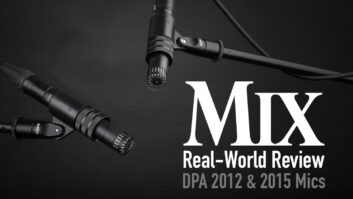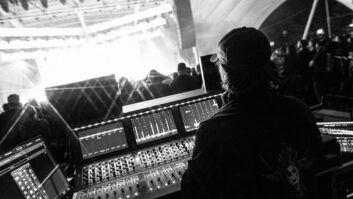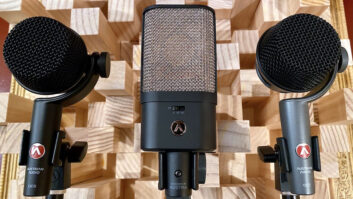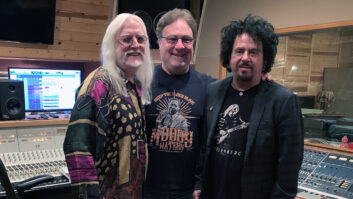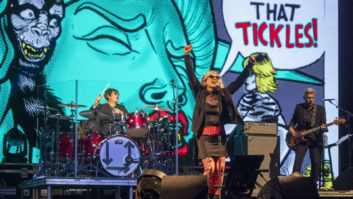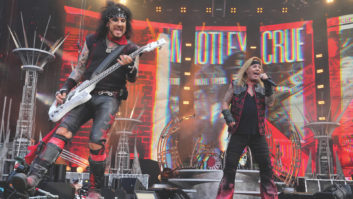Back in 1985, a young engineer named Ed Cherney got the call to work on Bill Withers’ Watching Me Watching You. For Cherney, that was hundreds of records ago, but the memories of hang time with the great singer/songwriter, who turns 80 this year, have stayed with him.
“I remember he was funny and smart and he was kind to me,” Cherney says. “We ended up hanging out and laughing, and he’d tell me stories about what it was like growing up in the Jim Crow South.”
Fast-forward to spring 2018: Now a great mentor for budding music engineers, Cherney was planning an educational event to be conducted by METAlliance, the group he co-founded with top engineer/producers Frank Filipetti, George Massenburg, Al Schmitt, Elliot Scheiner and Chuck Ainlay. The engineers would divide into singles and pairs, each taking a room in Capitol Studios and working with small groups of attendees, including audio engineering students, who would rotate through the rooms throughout two days to observe a variety of recording or mixing sessions.
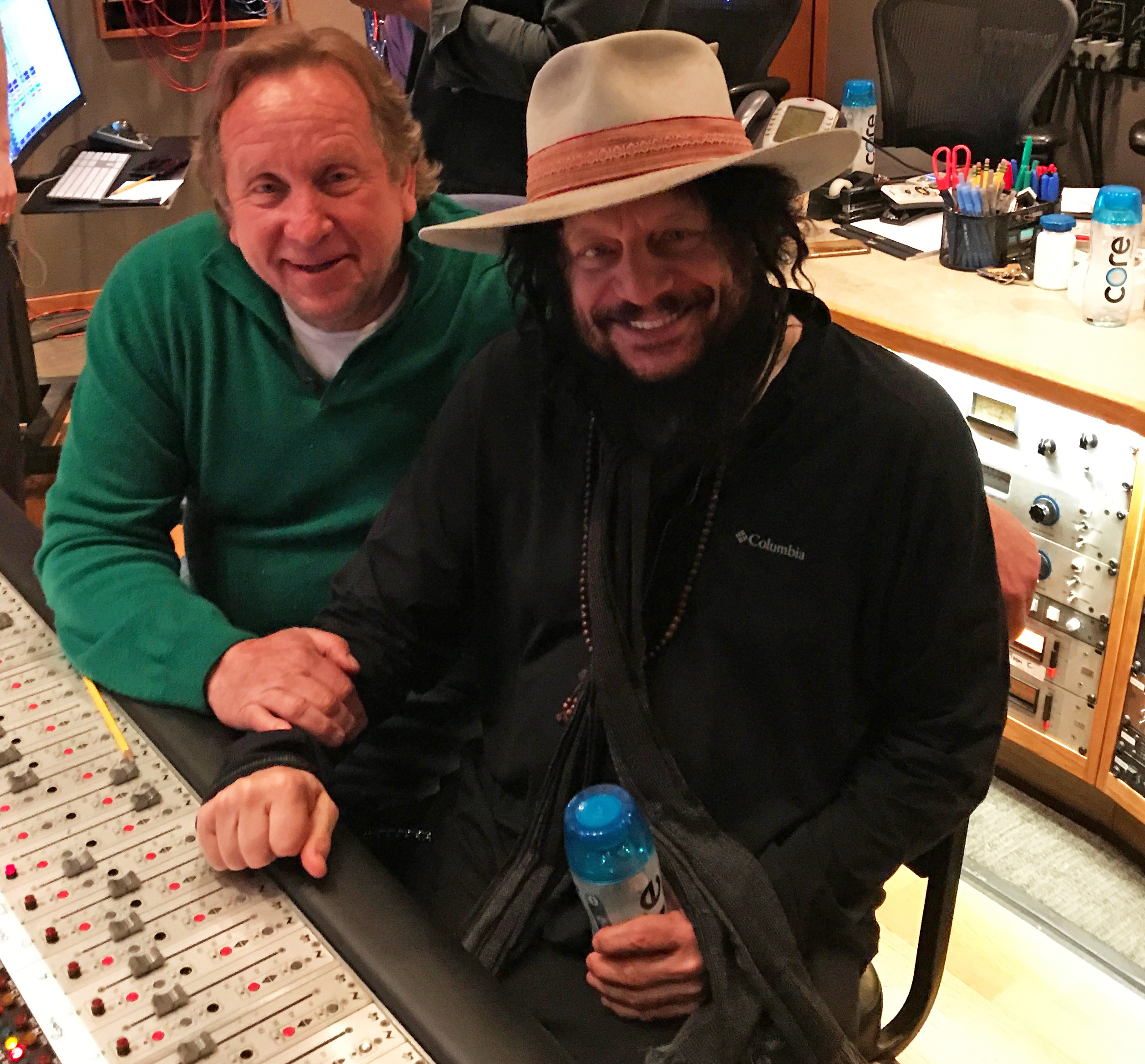
It takes connections and skill to make such a complex venture happen. “I called my good friend Don Was and asked if he had a project that he wanted to track as an opportunity to educate these kids, letting them see and experience what a real professional recording session is like,” says Cherney, whose collaborations with Was go back to Bonnie Raitt’s multi-Grammy Award-winning 1989 masterpiece, Nick of Time.
As it turned out, Was, the producer and now president of Blue Note Records, was about to go into the studio with jazz/hip-hop artist José James to make Lean on Me, a full album of Bill Withers covers.
“The concept for this album totally originated with José,” Was explains. “Like a lot of vocalists, José loves to sing Bill’s songs. The melodies are beautiful and the lyrics roll off the tongue like butter; they’re deeply soulful. José had been performing one or two of them live, and the audience would go crazy every night. However, I think he found that younger audiences were becoming increasingly unaware of Bill’s incredible musical legacy. So the idea comes from a combination of wanting to do something to shine a light on the greatness of Bill Withers and the love of performing his songs.”
On unforgettable songs such as the title track, as well as “Ain’t No Sunshine,” “Use Me,” “Kissing My Love,” “Just the Two of Us” and others, the arrangements worked up by James and the band—drummer Nate Smith, keyboardist Kris Bowers, guitarist Brad Allen Williams, percussionist Lenny Castro and bass player Pino Palladino—bring Withers’ songs into new focus.
Related: Classic Tracks: Bill Withers, “Ain’t No Sunshine,” by Barbara Schultz, Nov. 1, 2012
“The challenge lay in remaining true to Bill’s original instincts for the songs while still recording something other than karaoke covers of the originals,” Was says. “I suggested that José treat the compositions as if he wrote them and find his own way into interpreting the lyric separate from Bill. Same with the musicians: Respect Bill, but be creative and honest in your approach. I think we hit a really good balance.”
Sessions for Lean on Me took place in Capitol Studio B, where Cherney captured the band live to Pro Tools HDX via the studio’s vintage Neve 8068 board, with about a dozen METAlliance students in attendance.
“José and his band were so good. You rarely get an opportunity to see something like that with Don producing and with a halfway decent engineer,” Cherney jokes. “I think with those kids being there, it actually put everyone on their toes. They might have played a little better because it was more of a performance with an audience.
“I got there early to set up,” Cherney continues. “The band showed up around noon, but kids were there at 9, so I had them help set up the room and explained what I was doing: why I put people in certain places, the kind of microphones I was using. We also talked generally about how to become a great music-maker and a great recording engineer. How to make a session go and make everyone feel good about what they’re doing.”
Among the recording techniques Cherney shared was a favorite drum-miking tip: “I like to place a Sanken CO-100K about 6 feet in front of the drums and about 6 feet high,” he says. “It’s an ultrawide-band omni and I usually limit the bejeezus out of it and just try to break it. Then I’ll use just a little bit of that to give the drums more life.”
Another critical element was the Steinway B “Nat King Cole piano” at Capitol—an essential sound on the title track. “I used these new microphones I got by Sanken, the CU-51s,” Cherney says. “I put one over the low hammers and one over the high hammers and pushed the faders up, and the piano just sang. That’s such a beautiful piano.”
Cherney waxes a bit philosophical when asked how he captured Pino Paladino’s awesome bass sound: “We had just a little Ampeg B-15 cabinet with him, and we plugged him in direct; there was a touch of 1176, and that’s really it. The sound comes out of his fingers. He’s got such a beautiful, even touch.
“When I was first starting out, like these kids, I couldn’t get a bass sound or a drum sound to save my life,” Cherney adds. “I’d stay up all night, plot and scheme what microphones I was going to use and what signal processing, and I couldn’t make stuff sound good at all. Then one day I was with Don doing a Bonnie Raitt record and Jeff Porcaro came in, and I think I had one microphone up because I was just getting sounds, prepping—a 57 about 10 feet away from him—and it was the greatest drum track I’d ever gotten. It had everything to do with the player, as opposed to the gear.”
Related: Classic Tracks: Bonnie Raitt’s “Thing Called Love,” by Blair Jackson, April 1, 2011
It’s an exceptional opportunity for the students, especially, to sit down in front of the control room glass, put on headphones, and listen in while a powerful vocalist like James sings live with the band. Cherney treated those vocals like keepers, because that’s how James sang them.
“They have that Frank Sinatra U49 microphone, and we used that with a touch of Fairchild compression and not much else,” Cherney says. “When the tracking went down, it was one of those things where the music was just filling the speakers and everybody was really knocked out.”
After two days in Capitol, additional recording was done by Pete Min, Todd Carder and Rouble Kapoor in L.A. and New York before Brian Bender mixed the album at The Motherbrain West (L.A.).
Want more stories like this? Subscribe to our newsletter and get it delivered right to your inbox.
“Don and I started out together doing Bonnie Raitt’s Nick of Time record and we spent a good 15 years together every day, traveling the world, doing everybody from Bonnie to Bob Dylan to Neil Diamond to Iggy Pop to the B-52s to the Rolling Stones—it was the time of my life,” says Cherney, looking back. “So to work with him now, with such wonderful, sensitive musicians—it was a beautiful couple of days, and I hope that translates to the way people experience the record.”

